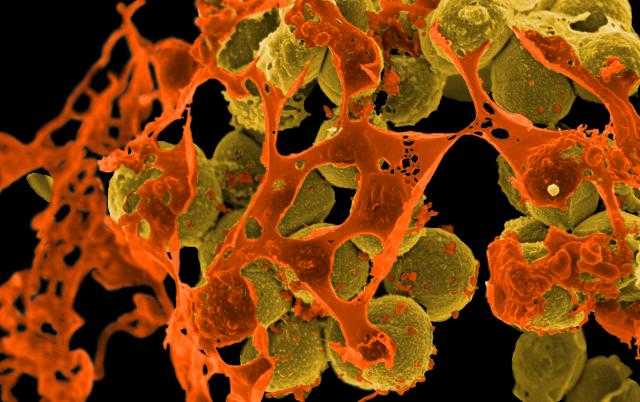The E. coli found infecting a Pennsylvania woman that is resistant to colistin — the antibiotic of last resort — signals that a superbug is inevitable. Circulating among the bacteria in humans are all the antibiotic-resistance genes necessary to create a superbug; they just need to come together in one bacterium. This nightmare scenario highlights two urgent needs: to slow the development of resistant bugs and to spur development of new antibiotics.
Why are we confronting a superbug?
The prices of antibiotics are too low. Low prices reduce the barrier to prescribing antibiotics, while high patient demand fosters overprescribing. Consequently, an estimated 20 to 50 percent of antibiotics dispensed in hospitals and about a third of those prescribed in physicians’ offices are inappropriate or unnecessary. Overuse breeds resistance.
Simultaneously, low prices discourage the development of new antibiotics. Consider that almost all of the new anti-cancer drugs cost more than $100,000 per course of treatment. For instance, Ibrance does not cure breast cancer, prolongs life on average less than 10 months and costs nearly $120,000 per year.
By contrast, one of the latest antibiotics approved by the Food and Drug Administration, dalbavancin, is considered very expensive, at $4,500 to treat MRSA (methicillin- resistant Staphylococcus aureus). Meantime, any breakthrough drug developed to fight antibiotic-resistant infections would be used sparingly in order to avoid breeding resistance — further lowering its financial returns.
The consequence: Nearly 836 drugs or vaccines are being developed for cancer — 82 drugs for breast cancer alone — compared with just 37 antibiotics in clinical development. Only 13 antibiotics are in Phase 3 — the final phase of testing before being submitted to the FDA for approval. Of these, just three target the types of bacteria that the Centers for Disease Control and Prevention considers an urgent public health threat.
Even without a superbug, the CDC estimates that more than 2 million people annually are infected with antibiotic-resistant bacteria and more than 23,000 people die as a result.
Congress has tried to fix this problem, with limited success. In 2012, it passed the Generating Antibiotic Incentives Now (GAIN) Act, speeding FDA review and giving drug companies five additional years of patent exclusivity before facing competition from generics. GAIN encouraged some companies to continue antibiotics research and some investors to finance start-ups. Even with this added enticement, however, development is lagging.
Unless we shift course, superbugs will become a fact of life. Here is a four-pronged approach that might work:
First, every hospital must implement a drug stewardship program to reduce inappropriate antibiotic use. The CDC has developed requirements such as appointing one pharmacist responsible for overseeing antibiotic use and holding physicians accountable by tracking and reporting individual antibiotic prescribing and resistance patterns.
These programs reduce resistance while saving hospitals money. Unfortunately, they are voluntary. Medicare should require all hospitals to implement such policies and report results annually as a condition of participation and payment.
Second, to reduce inappropriate prescribing for colds, sore throats and other, mostly viral or self-limiting minor ailments, every antibiotic prescription should be electronically reviewed to be certain it meets national guidelines. With electronic health records and prescriptions, such checking is possible. It should be mandatory for makers of electronic health records and major pharmacies to develop such capabilities and for health systems and physicians to install them as part of their quality reporting requirementsin Medicare programs.
Third, the government and industry should collaborate to fund pre-clinical research on antibiotics — in other words, studies of how drugs get into and fight infections. As the Pew Charitable Trusts has identified, there is a valley of ignoranceon this basic science, particularly involving gram negative bacteria — like the E. coli — that are the most resistant and dangerous. This is not a current focus for drug companies or the National Institutes of Health, but it is essential to developing drugs to combat emerging infections.
Finally, we need financial prizes for researchers and companies who develop new antibiotics. History shows that prizes worked in generating novel ways of preserving food (Napoleon), naval navigation (Britain) and even predicting your movie preferences (Netflix). Instead of the market as currently configured — with drug prices paying for research — I propose an enormous prize, perhaps $2 billion, to anyone who secures FDA approval for a new antibiotic, plus $2 billion bonuses for developing a drug attacking one of the CDC’s urgent threats or a new class of antibiotics.
These prizes should be funded collectively by the United States and other developed countries. The U.S. portion could be funded by a tiny tax on hospitals — two cents for every $10 in revenue would generate $2 billion a year. Furthermore, all participating countries could also agree to stewardship rules so that using the new antibiotics would minimize the development of resistance.
The cost sounds high, but the price of inaction is even higher. We need big changes — and big prizes — to save us from the tiny bacteria threatening us.
EZEKIEL EMANUEL








